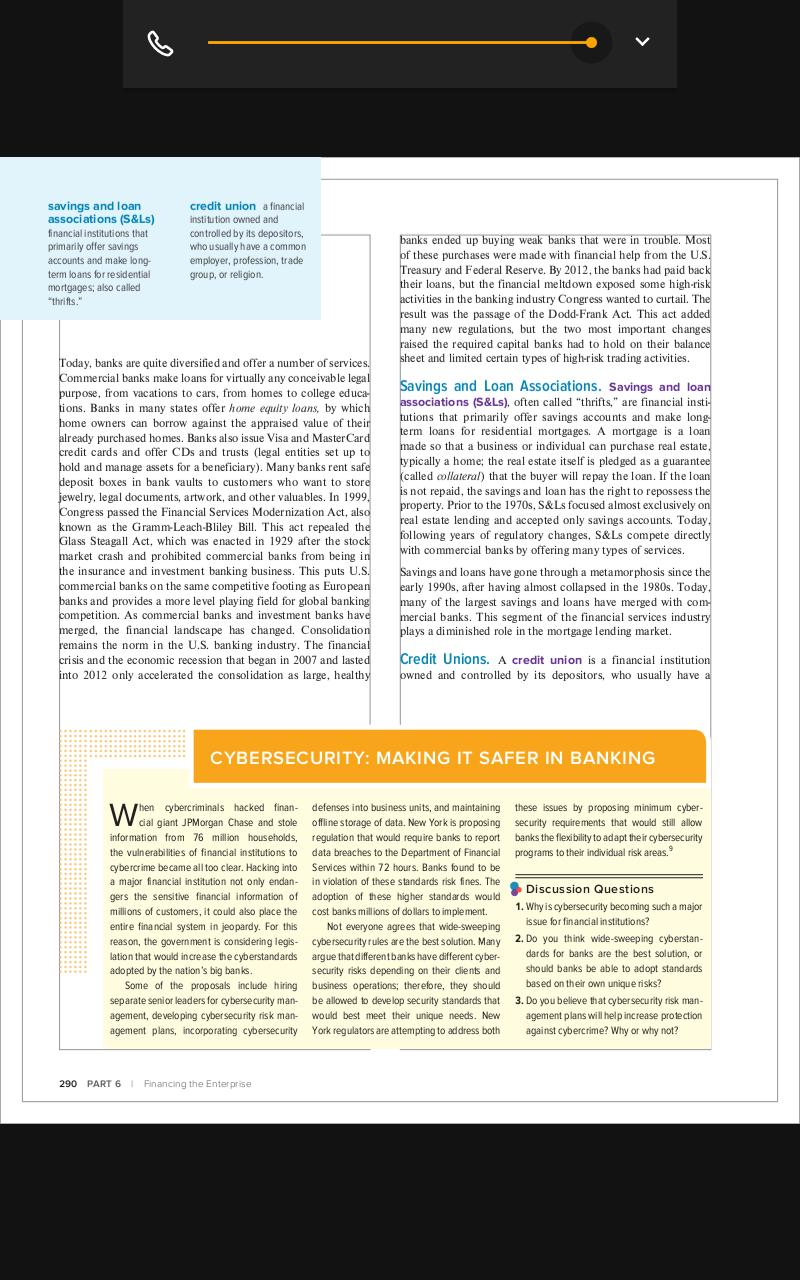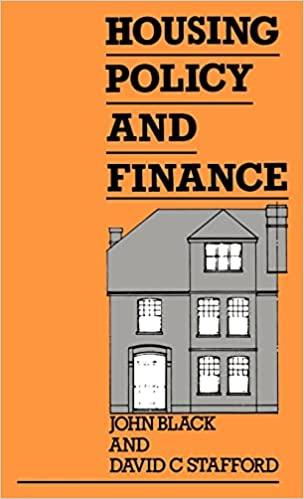
savings and loan associations (S&Ls) financial institutions that primarily offer savings accounts and make long- term loans for residential mortgages, also called thrifts." credit union a financial institution owned and controlled by its depositors, who usually have a common employer, profession, trade group, or religion Today, banks are quite diversified and offer a number of services. Commercial banks make loans for virtually any conceivable legal purpose, from vacations to cars, from homes to college educa tions. Banks in many states offer home equity loans, by which home owners can borrow against the appraised value of their already purchased homes. Banks also issue Visa and MasterCard credit cards and offer CDs and trusts (legal entities set up to hold and manage assets for a beneficiary). Many banks rent safe deposit boxes bank vaults to customers who want to store jewelry, legal documents, artwork, and other valuables. In 1999, Congress passed the Financial Services Modernization Act, also known as the Gramm-Leach-Bliley Bill. This act repealed the Glass Steagall Act, which was enacted in 1929 after the stock market crash and prohibited commercial banks from being in the insurance and investment banking business. This puts U.S. commercial banks on the same competitive footing as European banks and provides a more level playing field for global banking competition. As commercial banks and investment banks have merged, the financial landscape has changed. Consolidation remains the norm in the U.S. banking industry. The financial crisis and the economic recession that began in 2007 and lasted into 2012 only accelerated the consolidation as large, healthy banks ended up buying weak banks that were in trouble. Most of these purchases were made with financial help from the U.S. Treasury and Federal Reserve. By 2012, the banks had paid back their loans, but the financial meltdown exposed some high-risk activities in the banking industry Congress wanted to curtail. The result was the passage of the Dodd-Frank Act. This act added many new regulations, but the two most important changes raised the required capital banks had to hold on their balance sheet and limited certain types of high-risk trading activities. Savings and Loan Associations. Savings and loan associations (S&Ls), often called "thrifts," are financial insti- tutions that primarily offer savings accounts and make long term loans for residential mortgages. A mortgage is a loan made so that a business or individual can purchase real estate, typically a home; the real estate itself is pledged as a guarantee (called collateral) that the buyer will repay the loan. If the loan is not repaid, the savings and loan has the right to repossess the property. Prior to the 1970s, S&Ls focused almost exclusively on real estate lending and accepted only savings accounts. Today, following years of regulatory changes, S&Ls compete directly with commercial banks by offering many types of services. Savings and loans have gone through a metamorphosis since the early 1990s, after having almost collapsed in the 1980s. Today, many of the largest savings and loans have merged with com mercial banks. This segment of the financial services industry plays a diminished role in the mortgage lending market. Credit Unions. A credit union is a financial institution owned and controlled by its depositors, who usually have a CYBERSECURITY: MAKING IT SAFER IN BANKING We Then cybercriminals hacked finan defenses into business units, and maintaining these issues by proposing minimum cyber- cial giant JPMorgan Chase and stole Offline storage of data, New York is proposing security requirements that would still allow information from 76 million households, regulation that would require banks to report banks the flexibility to adapt their cybersecurity the vulnerabilities of financial institutions to data breaches to the Department of Financial programs to their individual risk areas. cybercrime became all too clear. Hacking into Services within 72 hours. Banks found to be a major financial institution not only endan in violation of these standards risk fines. The gers the sensitive financial information of adoption of these higher standards would Discussion Questions millions of customers, it could also place the cost banks millions of dollars to implement. 1. Why is cybersecurity becoming such a major entire financial system in jeopardy. For this Not everyone agrees that wide-sweeping issue for financial institutions? reason, the government is considering legis- cybersecurity rules are the best solution. Many 2. Do you think wide-sweeping cyberstan- lation that would increase the cyberstandards argue that different banks have different cyber- dards for banks are the best solution, or adopted by the nation's big banks. Security risks depending on their clients and should banks be able to adopt standards Some the proposals include hiring business operations; therefore, they should based on their own unique risks? separate senior leaders for cybersecurity man be allowed to develop security standards that 3. Do you believe that cyber security risk man- agement, developing cybersecurity risk man would best meet their unique needs. New agement plans will help increase protection agement plans, incorporating cybersecurity York regulators are attempting to address both against cybercrime? Why or why not? 290 PART 6 Financing the Enterprise







